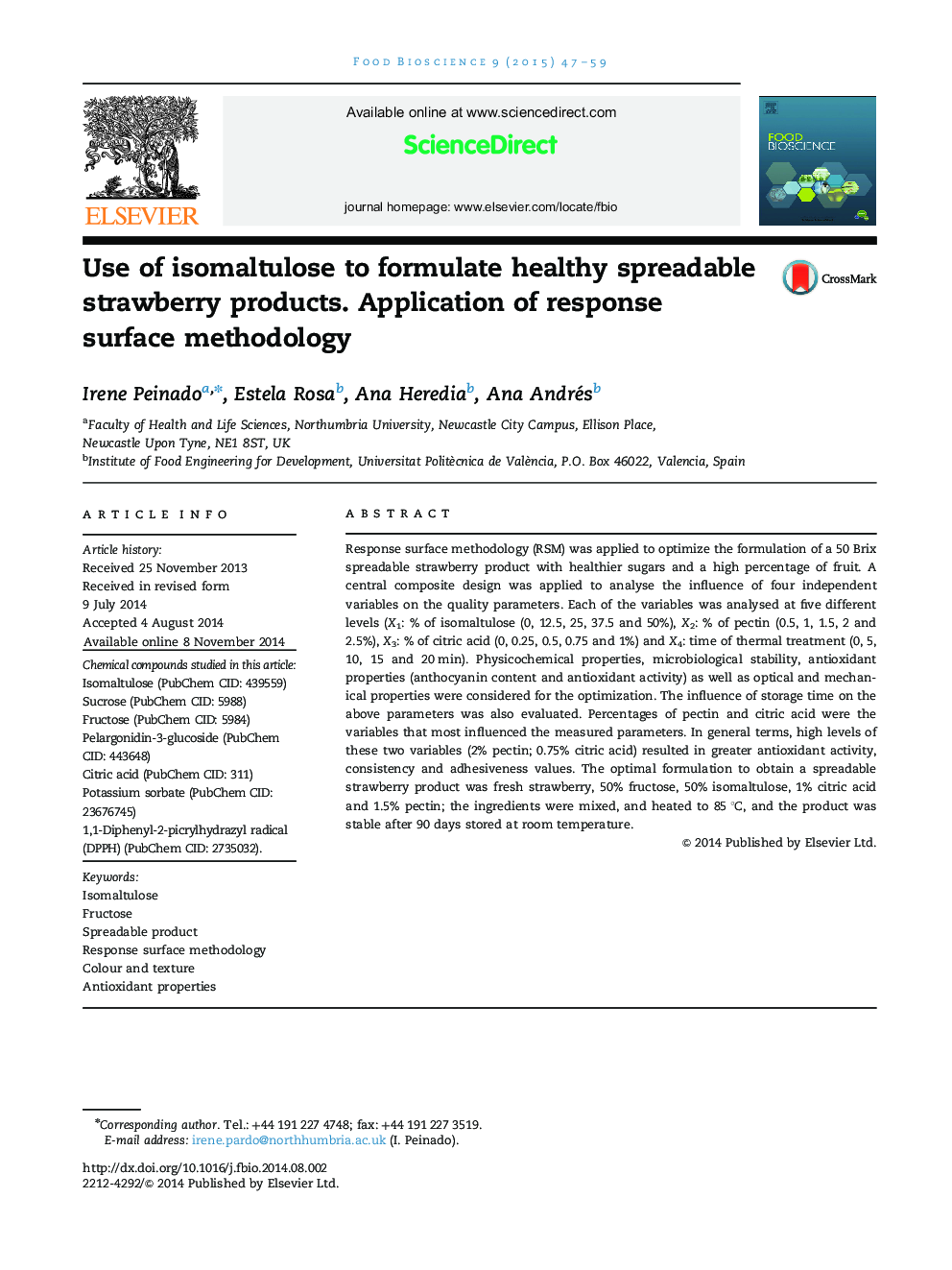| Article ID | Journal | Published Year | Pages | File Type |
|---|---|---|---|---|
| 19757 | Food Bioscience | 2015 | 13 Pages |
Response surface methodology (RSM) was applied to optimize the formulation of a 50 Brix spreadable strawberry product with healthier sugars and a high percentage of fruit. A central composite design was applied to analyse the influence of four independent variables on the quality parameters. Each of the variables was analysed at five different levels (X1: % of isomaltulose (0, 12.5, 25, 37.5 and 50%), X2: % of pectin (0.5, 1, 1.5, 2 and 2.5%), X3: % of citric acid (0, 0.25, 0.5, 0.75 and 1%) and X4: time of thermal treatment (0, 5, 10, 15 and 20 min). Physicochemical properties, microbiological stability, antioxidant properties (anthocyanin content and antioxidant activity) as well as optical and mechanical properties were considered for the optimization. The influence of storage time on the above parameters was also evaluated. Percentages of pectin and citric acid were the variables that most influenced the measured parameters. In general terms, high levels of these two variables (2% pectin; 0.75% citric acid) resulted in greater antioxidant activity, consistency and adhesiveness values. The optimal formulation to obtain a spreadable strawberry product was fresh strawberry, 50% fructose, 50% isomaltulose, 1% citric acid and 1.5% pectin; the ingredients were mixed, and heated to 85 °C, and the product was stable after 90 days stored at room temperature.
